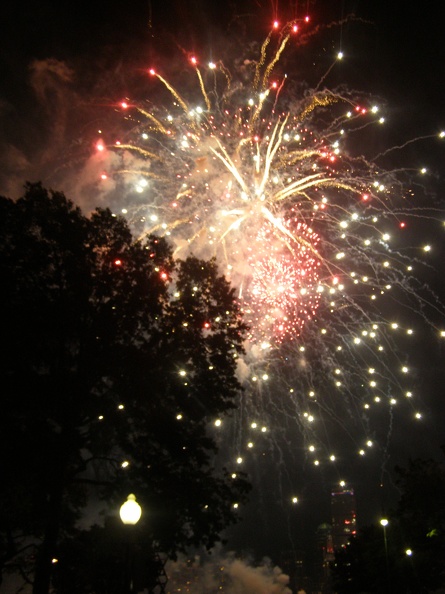
I used to love the Fourth of July. I loved putting together a red, white, and blue outfit, decorating my house with flags and my front porch with patriotic buntings, listening to patriotic music, and watching the fireworks in Boston. One year, I even wore an Uncle Sam costume to the fireworks show.
Unfortunately, the Fourth of July is yet another thing that has, to some extent, been ruined by the statue genocide of 2020.
In general, it is conservatives who tend to be the most passionate about the Fourth of July and other patriotic things. It is conservatives who are more likely to fly the American flag, to chant “USA,” to wear red, white, and blue, and to post memes involving George Washington and other founding fathers gloating about our victory over the British (my social media news feeds were flooded with a plethora of these last week).
These sentiments are certainly preferable to the views, commonly associated with progressivism, that focus on the negatives of America. Those who subscribe to this ideology characterize America as a fundamentally racist nation, paint our history as one of oppression and shame, and criticize the founding fathers, sometimes even calling for their cancellation.
I definitely come closer to agreeing with the pro-USA views of conservatives than I do to agreeing with the anti-USA views of the left. But I can’t fully get behind the patriotic, “Murica” loving sentiments either. At least not the way I used to.
That’s because the events that have so traumatized me over the past three years were perpetrated by, well, America. The horrific and sadistic destruction of one Christopher Columbus statue after another. The decisions of local governments to reward, rather than punish, the perpetrators by removing yet additional statues and by establishing a holiday in the perpetrators’ honor. The breathtakingly cruel and mean-spirited decision to eradicate all public art honoring the losing side of a war. And, although this is a slightly different topic, the election of a president who thought that he had the right to force all Americans to undergo a medical procedure against their will.
All of these events took place in America. All were perpetrated by people who live in America. It was Americans who viciously tore down everything that makes my life worth living, whether by acting as part of vicious, frenzied, and intolerant mobs, or by acting through their more civilized but equally intolerant public officials. The current situation, in which everything that makes life worth living has been destroyed, was created, collectively, by America. Of course, not every American supports these destructive policies. Some Americans vigorously oppose them (including, obviously, myself). But the fact that these policies were, in fact, enacted across the country demonstrates that our country, as a whole, supports them. These policies were enacted by the American people, either directly or through the democratic systems that are in place for policy-making at the local, state, and federal levels. America elected public officials who believe in the mass murder of historical figures for no other reason than being different from people today. America elected public officials, including a president, who believe that they should be able to invade the bodies of, and control the medical decisions of, their citizens.
In short, the atrocities that destroyed my life were perpetrated, or at least allowed to happen, by America.
When conservatives celebrate the Fourth of July, wear red, white, and blue, chant “USA! USA!,” and post patriotic memes, they believe themselves to be standing up to the anti-America rhetoric of the left. But I don’t think that is what they are truly doing.
All of the toxic actions, words, beliefs, and policies associated with the left – from the brutal destruction of statues to the implementation of totalitarianism in the name of fighting a virus – are, unfortunately, part of America.
Needless to say, this reflects very poorly on America.
It’s a comfort to know that, if the stereotypes are true, most of the people engaging in patriotic celebrations and displays oppose such totalitarian policies as statue destruction and mandatory medical procedures. But I don’t think that expressing love and pride for the country that did these things is the best way to express these sentiments. For me at least, “America” comes closer to being a synonym for the traumatizing things of the past three years than an antonym.
Don’t get me wrong, the Fourth of July is not nearly as painful to me as “Indigenous Peoples’ Day” or Juneteenth. I would much rather see the stars and stripes flapping in the breeze than the hideous, racist Pride flag. And I’d be much more likely to smile if I walked past someone on the street wearing a red, white, and blue t-shirt than, say, a shirt that said “Black Lives Matter” on it.
But for now, the Fourth of July is still tainted.
For now, it still rings hollow.
Perhaps it always will.
